|
Shared from @ H.L. Roberts Packing House From the 1890’s and into the 1920’s Hitchcock Texas produced more vegetables almost any other part of our county. The vegetables were sent by railroad to cities as far away as Chicago. After the vegetables were picked from the farms located here, they were sent to “packing houses” located here. They were placed in wooden barrels and packed in ice to keep them fresh. There were several packing houses here. Among those was one owned by H.L. Roberts. Other families owning packing houses were: Shiro, Henckel, Reitmeyer and Brett. Two factors led to the decline of the vegetable packing business in Hitchcock. One was when an insect attacked the crop and the other was the development of the refrigeration railroad car. When that happened the Texas valley area became the center for sending vegetables north, as they had a longer growing season. The H.L Roberts packing house is pictured here, as well as his family home that was built in about 1904. There is also a picture of the home today. Do you recognize this beautiful home? Shared from Hitchcock Heritage Society
0 Comments
HITCHCOCK, TXDiana J. Kleiner
HITCHCOCK, TEXAS. Hitchcock, also known as Hitchcock's and as Highland, is an incorporated community fourteen miles northwest of Galveston on State Highway 6, Farm roads 519 and 2004, and the Atchison, Topeka and Santa Fe line in southwestern Galveston County. The area was settled around 1846. On May 31, 1848, Jonas Butler acquired a league of land on Highland Bayou and built a house, part of which still stood in the 1940s. Butler was followed by a group of French settlers, who established homes on the bayou. The community was originally known as Highland for its location on the bayou's high banks. Travelers used the bayou to reach Galveston until the 1870s, when the Gulf, Colorado and Santa Fe Railway built through the settlement. The town was renamed around 1873, when Emily Hitchcock, widow of Galveston civic leader Lent M. Hitchcock, offered a 450-foot-wide tract from Cow Gully east to the section house for a townsite if the railroad would name the community for her husband. Local farmers shipped cattle and vegetables. A post office was established in 1884 under the name Hitchcock's, later shortened to Hitchcock. Thomas King platted the townsite around 1891, and by 1892 the community reported a population of 275, two grocers, and several fruit growers and commission merchants. Farmers later marketed their vegetables through a cooperative association. A local public school opened in 1894, and by 1907 the town had two schools, one with eighty-nine white pupils and two teachers and one with thirty-seven black pupils and one teacher. In 1914 Hitchcock had a bank, a hotel, a blacksmith, three general stores, and a population of 550. The town began to decline with the end of local truck farming after 1920. Most local packing houses closed, many residents moved to find work in Texas City, and by 1925 Hitchcock's population had fallen to 350. During the early 1930s the town grew slightly, but declined again by the eve of World War II to 350 residents and seventeen businesses. In the 1940s the Hitchcock population level remained steady because of local oil and gas development, the establishment of Camp Wallace, and Navy construction of a local blimp base for surveillance of enemy submarines (see HITCHCOCK NAVAL AIR STATION). The camp and base were used as discharge centers after the war, and some of those who passed through became local residents. During the postwar boom, Hitchcock developed a chamber of commerce, sewers, improved roads, natural gas service, a phone system, and three white and two black churches. In 1948 Hitchcock was made an independent school district. The community benefited from proximity to petrochemical industry centers at Texas City, Chocolate Bayou, and Freeport. Hitchcock's population jumped to 1,105 after 1954 and increased steadily after 1960, when the town incorporated. In 1968 Hitchcock's population reached a high of 6,954, served by thirty-six businesses. The number of residents fell during the 1970s. Hitchcock became a residential suburb with the development, only twenty minutes away, of the National Aeronautics and Space Administration's Project Apollo Space Laboratory Project at Clearwater. Hitchcock grew from 5,565 residents and twenty-five businesses in 1972 to 6,405 residents and sixty-seven businesses by 1988. The town offers a yacht basin and resort facilities and celebrates a Christmas Parade each December and a Good Ole Days Parade in August. In 2000 Hitchcock reported 214 businesses and a population of 6,386. BIBLIOGRAPHY: Galveston County, Texas: An Economic Base Study (University of Houston Center for Research on Business and Economics, 1965). Galveston Daily News, August 15, 1939. Samuel Butler Graham and Ellen Newman, Galveston Community Book: A Historical and Biographical Record of Galveston and Galveston County (Galveston: Cawston, 1945). Vertical Files, Dolph Briscoe Center for American History, University of Texas at Austin. Where IMAGE USE DISCLAIMERA ll copyrighted materials included within the Handbook of Texas Online are in accordance with Title 17 U.S.C. Section 107 related to Copyright and “Fair Use” for Non-Profit educational institutions, which permits the Texas State Historical Association (TSHA), to utilize copyrighted materials to further scholarship, education, and inform the public. The TSHA makes every effort to conform to the principles of fair use and to comply with copyright law. For more information go to: http://www.law.cornell.edu/uscode/17/107.shtml If you wish to use copyrighted material from this site for purposes of your own that go beyond fair use, you must obtain permission from the copyright owner. CITATIONThe following, adapted from the Chicago Manual of Style, 15th edition, is the preferred citation for this article. Handbook of Texas Online, Diana J. Kleiner, "HITCHCOCK, TX," accessed July 21, 2020, http://www.tshaonline.org/handbook/online/articles/hfh06. Uploaded on June 15, 2010. Published by the Texas State Historical Association. Shared from https://tshaonline.org/ Officer M. Tinsley recently completed her term as Chief of the week. One of requirements of being Chief of the week, is a written assignment discussing her week and what she has experienced and learned from her week. We thank Officer Tinsley for stepping up to the challenge as Chief of the week and for her thoughts and takeaway from her experience.
“During the week of June 22, 2020, I was presented with an amazing opportunity to step in as Police Chief of the week for the Hitchcock Police Department. Having been in Law Enforcement for five years, this opportunity gave me insight to my future in Law Enforcement and a better appreciation for this position. I was able to witness the workings of the department that not many people get to see when it comes to decision making for not just yourself but numerous people. On June 23, 2020 I had to identify an issue, understand the best interest of everyone, and find a possible solution that would help with pushing forward on how to handle the invisible enemy that is sweeping this world at this time. As soon as it was learned that there was an Officer who tested positive for COVID-19, I made the decision to have everyone tested as soon as possible. To minimize contact with employees and citizens, I consulted with Captain Underwood and Lieutenant Pruitt on allowing an officer to stay at home for two weeks to answer the less priority calls. This allowed the officers on the streets to minimize contact and respond to emergencies only. With this decision, I believe we were able to minimize the spread of COVID-19 to and from each other along with the community within that week significantly. Keeping the spread of the virus at bay is a very crucial matter, especially for a small department. Even though I made the decision for the safety of the employees and their families, some individuals were not pleased and did not agree with my decision. I took it upon myself to speak with these individuals openly and we were able to discuss my decision-making process and the pressure that I currently was under from such a stressful situation. I realized that there will always be someone who has opinions about the decisions being made and the job being done. This encounter brought my attention to the things that Chief Smith is presented with daily, that no one knows about. I truly believe that Chief Smith carefully examines every option for the best outcome of any situation that is at hand. During a recent conversation with Chief Smith about my experience, we discussed the importance of being respectful, documentation, and the important role the Chief of Police has within the community. Chief Smith places a heavy emphasis on leadership. It is required that everyone assume leadership roles within the agency and the community. As a result of my assigned task I can honestly say that my confidence is higher. Something else I experienced, was how the yearly budget works and the obstructions that may present itself. We were able to purchase three new 2020 Chevrolet Tahoe’s fully equipped, new computer modems, body cameras and dash cams; all of which were desperately needed. We currently possess a magnificent group of individuals who work for the Hitchcock Police Department, who all carry a very important role. During my time as Chief of the Week, I gained a stronger appreciation for not only Chief’s role, but the others who serve in our department. With such great potential and the leadership, we are under, I look forward to the things to come for this department.” -M. Tinsley #914 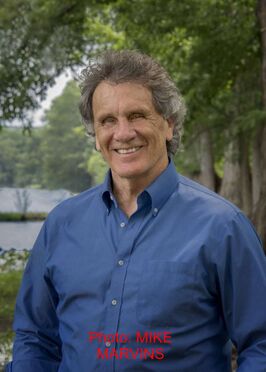 HITCHCOCK - Driving south along busy Highway 6 as it bisects this little Galveston-area bedroom community, population 7,000, you're more likely to notice D&D Liquors, Hot Rod Diesels and La Frontera Mexican Restaurant than you are the unobtrusive state historical marker and small sign announcing Stringfellow Orchards. But then, when you make a left turn into a long, straight driveway lined with tall pine trees, traffic noise fading and fallen pine needles cushioning your ride, you're suddenly in another century. At the foot of the driveway is a white frame house with green trim, a two-story Queen Anne with a wide front porch, the porch ceiling painted the traditional sky-blue to confuse wasps and yellow-jackets. Built by a Confederate Army veteran in 1884, the house and adjoining nine heavily wooded acres is now owned by a black man, financial consultant Sam Collins III. The Hitchcock native appreciates the historic irony. So do his fellow preservationists. "We've been going around the country tearing down Confederate statues, and here he is, an African American, preserving this Confederate soldier's legacy home," said Minnette Boesel, a Houstonian who serves with Collins on the board of the National Trust of Historic Preservation. "He recognizes the significance of the place as a teaching tool. Our kids are learning their history from it." Today the partially restored old house, listed on the National Register of Historic Places, serves as Collins' office. The house and grounds still need lots of work, but one day, someday, if his dream gradually matures into reality, it will be the Stringfellow Learning Center. It will be a venue for the arts, for living-history exhibits, horticulture classes and other community functions to add to the Juneteenth celebrations he and his wife Doris have been hosting since 2006. He has no shortage of ideas for the place, if only he can find the time - and the money. The man who built the house, a Virginian named Henry Martyn Stringfellow, was a private in the Confederate Army who fought at the battles of Yorktown and Richmond. He accompanied Major Gen. John B. Macgruder to Galveston, participated in the Battle of Galveston and afterward was promoted to captain and put in charge of the ordnance department in Houston. In 1863, he married Alice Johnston of Houston, and the young couple settled in Galveston. As Stephen Chism, author of a Stringfellow biography, tells the story, a chance encounter in April 1866, changed his life. Fishing from a Galveston wharf one morning, he struck up a conversation with a man who had grown up on the Rhine in Germany - where he should have stayed, the man told Stringfellow. He could have made a fortune growing grapes. Stringfellow was intrigued, and, in Chism's words, "soon became infatuated with horticulture." He started experimenting with fruits and vegetables on a two-and-a-half-acre plot at 45th St. and Ave. N. He started with cabbage and melons, added a small orange grove and 600 grape vines and began selling his produce to local dealers and restaurants. In 1883, worried about storms and tidal surges on the island, Stringfellow moved his family across Galveston Bay to Hitchcock, at the time a little farming community and shipping center. He acquired 30 acres along Highland Bayou, built his home the next year and started Stringfellow Orchards. He also wrote two books about growing fruits and vegetables along the coast and within a decade or so was known nationwide for his experiments with pears, Satsuma oranges from Japan, grapes, cauliflower, sweet potatoes and other fruits and vegetables. The Dallas Morning News labeled Stringfellow the state's "Pioneer Pear Man." The paper also noted that Hitchcock "didn't amount to much," until Stringfellow moved in and got the locals interested in growing fruits and vegetables and shipping the produce across the country. Collins, 45, was intrigued to discover that Stringfellow was something of a progressive for his day. At a time when black laborers in the area were being paid 50 cents a day, Stringfellow was paying his 30 black employees $1 a day. His neighbors grumbled that the dollar-a-day wage was driving up labor costs. "I always say, he took the high road, because the low road was so crowded," said Collins, a Texas Aggie with a yen for pithy aphorisms. A green preservationist In 1894, Stringfellow sold the orchard and moved back to Galveston because of failing health. (He died in 1912.) The property went through a couple of owners until Albert and Myrtle Kipfer bought it in 1920, fleeing the cold winters of their native Kansas. Collins bought the property in 2005 from their surviving daughter. When Collins discovered the property in 2004, damage lingered from Hurricane Alicia in 1983 - the property overgrown, trees and limbs down, gaping holes in the floor and roof, outbuildings collapsing in on themselves. The house was cluttered with Kipfer-family belongings and records from the Stringfellow operation. "It was like a time capsule," he said. "Why'd you do this?" I asked Collins a couple of days ago as he sat eating a Jack-in-the-Box breakfast behind a vintage desk in what had once been the parlor. He took a swig of orange juice. "I read the historical marker," he said. "That's why preservation and history is so important. Without that marker, I wouldn't have known the story. And then I drove down the driveway, and I said, 'Man, look at that! A house!' " He quickly decided he had to have it, but the house wasn't for sale. ("You gotta be outch your mind!" his wife told him.) A year later he went back to the house and managed to negotiate a deal with the elderly owners. He realized almost immediately he had taken on a monster task. "I had never done a project like that," he recalled. "I'm going from no experience to trying to restore a historic structure, keep it authentic the way it's supposed to be. I was new to preservation, as green as they come." He knew he didn't want to turn the old house into some sort of museum. When he learned the phrase "adaptive reuse" from his new acquaintances at the National Trust for Historic Preservation, he realized that's what he was trying to do. "That wasn't a good fit to get the traffic that I need to be sustainable," he said. "Now, with my investment business, the site is sustainable. And then I'm still able to do the preservation work and the history work. We still have kids coming in on field trips, we still have families rent the grounds for family reunions." Unspoken issue of race I met Collins a few weeks ago when he visited the Chronicle editorial board as part of a National Trust contingent. It's unusual to see an African American involved with historic preservation. Collins laughs about it, but he's aware that race is an unspoken issue, whether it's having to use a bank in the Northeast for financing because area banks turned him down (despite his finance experience) or having to deal with local suspicions about his motives. He knows what they were thinking: Black guy? Historic preservation? Why? "And I grew up here!" he said. "My message to the heritage society is that we came to add something. It's not, 'We gotcha! We got the slave-owner's place!' Getting involved with historic preservation helped me turn this place into an asset for the community." Joe Holley Follow Joe on: https://www.facebook.com/pages/Joe-Holley/296218067166702holleynewsNative Texan Joe Holley is a former editorial page editor and columnist for newspapers in San Antonio and San Diego and a staff writer for The Washington Post. He has been a regular contributor to Texas Monthly and Columbia Journalism Review and is the author of two books, including a biography of football hero, Slingin' Sammy Baugh. He joined the Houston Chronicle in 2009. Past Articles from this Author:
This article was shared from The Houston Chronicle originally published 11/4/2016 https://www.houstonchronicle.com/news/columnists/native-texan/article/Historic-irony-in-the-preservation-of-Confederate-10594891.php#photo-11373871 he National Register of Historic Places is the official list of the Nation's historic places worthy of preservation. Authorized by the National Historic Preservation Act of 1966, the National Park Service's National Register of Historic Places is part of a national program to coordinate and support public and private efforts to identify, evaluate, and protect America's historic and archeological resources. Property NameStringfellow Orchards Reference Number13000043 StateTexas CountyGalveston TownHitchcock Street Address7902 Highway 6, Hitchcock, Texas Multiple Property Submission NameN/A StatusListed 02/27/2013 Areas of SignificanceAgriculture, Architecture Link to full filehttps://www.nps.gov/nr/feature/places/pdfs/13000043.pdf Henry Martyn Stringfellow, an influential early Texas horticulturalist, established his well-known orchard in Hitchcock in 1883. Though he began his career in nearby Galveston nearly twenty years earlier, it was here that he solidified his reputation as a pioneering authority on pears. His productivity in Hitchcock coincided with and influenced the emergence of a thriving agricultural economy in Hitchcock. He sold his thirty-acre orchard after just ten years, but in 1920 the Kipfer family once again used the property to sustain an agricultural enterprise. They successfully made a living on the property by operating a truck farm and flower shop until 1989. Stringfellow Orchards is nominated to the National Register of Historic Places under Criteria A for its association with agriculture and under Criterion C for architecture, both at the local level of significance.
Shared from https://www.nps.gov/ As I was driving on Highway 6 in Hitchcock, Texas, in May 2004, I noticed a Texas Historical Commission subject marker marking Stringfellow Orchards. I stopped to read it and was immediately drawn to the story. Henry Martyn Stringfellow was a world-renowned horticulturalist who started his business in Galveston after the Civil War and eventually moved it 12 miles inland to Hitchcock in the 1880s.
I drove down the overgrown driveway to take a closer look at the property. Sitting in the center of the almost 9.5-acre estate was a 1.5-story, wood-framed folk Victorian residence with Queen Anne form. The house was in terrible shape and had been hidden from the public by the overgrown vegetation. The house, barn, and other structures seemed to have been swallowed by dense foliage. Re-Animating the OrchardsAs I stood there looking over the property, I thought to myself, “What an amazing place! It would be great to own a place like this and to restore it.” I had been bitten by the preservation bug, and I began researching the property. On December 15, 2005, I closed on the historic property, and the rebirth of Stringfellow Orchards began. I immediately cleared the grounds and prepared for a community celebration. I hired contractors to repair the foundation of the house, replace its roof, replace rotten wood around its exterior, and paint it. My wife Doris and I hosted our first Juneteenth event at the site in 2006. With over 500 people in attendance, the celebration was a great success. We thought this would lead to tours of the site and wedding rentals and planned to use the proceeds to help offset the cost of the restoration. Over the next few years, many events were indeed held at the site, but given the discounted rental fees that attracted business and the money spent on advertising, we were unable to generate enough revenue to cover even their cost, let alone the restoration. The Challenges of StewardshipThen in 2008 we were hit with Hurricane Ike and the financial market collapse, and our dream turned into a nightmare. Everything that could go wrong did go wrong. When we bought the property in 2005, the house was filled with furniture, and the barn and sheds contained old farm equipment. During the economic downturn we sold much of that furniture and equipment. We were forced to sell it cheap, but it helped us make it through. We also continued to host events and share the amazing story of Stringfellow Orchards. Like many others suffering through 2009 and 2010, we exhausted our savings and most of our retirement accounts. We eventually listed the property for sale, but did not receive any serious offers. We had invested so much of our time, talent, and treasure that we could not just give the property away to a low bidder. Success Through Shared UseIn 2011 I began planning my next career move. I had always wanted to work for myself and decided that 2012 would be the year I made the leap of faith. On April 20, 2012, I resigned from my job at a large brokerage firm and opened my own investment services company at our historic site. The first eight months of the transitioning were difficult, but by the end of 2012 things had begun to turn around. Housing a business built on trust in a historic structure was a perfect fit. Sitting across the table from a client in my office or on the porch feels very different from being in the corporate climate of a downtown building. Clients have even remarked that the setting reminds them of visiting grandparents in the country. It has helped me build personal understanding with clients and shown them that working with me is about more than numbers. Also in 2012 I applied to have Stringfellow Orchards listed on the National Register of Historic Places. On February 27, 2013, it became the first and only nationally registered property in Hitchcock. Thanks to the new business, my revenues hit an all-time high in 2013, and beat that record in 2015, which is also the year I was named Galveston County citizen of the year by the Galveston County Daily News for my work in the community and in historic preservation. Our historic site, which had once been a negative cashflow item on our balance sheet, has now become an asset. A Vision for the FutureBut the impact of the project is measured in much more than dollars and cents—it is our goal to help grow people as they visit the site. What was once an eyesore for the city is a vibrant part of the downtown area that even draws local photographers and artists. The property has been featured on HGTV, Texas Country Reporter, PBS with Lidia Bastianich, and as part of a documentary about the Stringfellows, as well as in several magazines, including national publications This Old House and Black Enterprise. Shared with Sam Collins III permission Shared from https://forum.savingplaces.org/ Howdy there. My Name is Clay Burton. I was born in Galveston County, Tx in 1963 and have lived in Hitchcock Tx. for at least 40 years now. but only the past year or so I have become a very active volunteer in local community services here in Hitchcock. I am a new member of The Hitchcock Chamber of Commerce, and founder/administrator of the very diverse and growing Facebook forum "The Future Of Hitchcock" (Times The Are a-Changin) group. I am also a Texas Peer Recover Coach class graduate volunteer working with clients and peers in HIV education/prevention, mental/emotional challenges, and substance use addiction. A program designed based on positive and spiritual solutions for living life on life terms successfully with one recovered persons experience working with the newly recovering. One very big achievement for Hitchcok was The HPD Chiefs initiative to create the first CPA (Citizens Police Academy) classes where resident graduates are educated and informed on daily Law enforcement.duites and routine performances.. The goal is to develop an understanding for the public and bridge communication, to appreciate each other's needs In turn, working together with the citizens to help serve the dept so they can better serve us. We The People. to be apart of instead of apart from I am so proud to be among the first graduating class of the CPA and now an Alumni of the association CPAAA The class was so popular that the second class was scheduled for last April pre-COVID-19 and since delayed until further notice. However, the dept is still actively accepting applications I attend City Council meetings regularly and regard myself as a local and informative social media source as well as an inspirational cheerleader! I am always interacting with citizens and neighbors daily for keeping up with Hitchcock's current events. I invite you to read our Facebook group description. It sums up our vision as we move forward into the future with the ongoing and incoming 2020-2040 city plans and comprehensive changes. Our town is more diverse than ever largely due to our HPD Police Chief "Willmon (Smitty) Smith" in coordination with our cities Municipal leader's economic management. Our population is vastly growing all around us and that means prosperity as well as new challenges. I have taken it upon myself the self-appointed role and desire to renew the minds, beliefs, and trust of our residents by witnessing real and sustainable progress. God gave me an incredible new life today that I never would ever have imagined before. With only one directive. "In order to keep the wonderful happiness that I have been given, I must pay it forward to the next person in need! Aside from my Free Will, it's not a choice for me, and its so much fun giving back Woo Hoo! Hitchcock, (understandably) has had somewhat of a stigma attached to our town from the past and from the old ways of doing business. But I ask our residents to look around and see the ground floor opportunities to make Hitchcock a shining example in Galveston County. Never before in our history has the timing been so right. Positivity is in demand and sells itself. If I can assist you in any way to highlight the good news of our city as a private citizen and volunteer, then please by all means, feel free to contact me. Clay Burton email: claylord99@yahoo.com phone: 832-418-5828 Facebook group: The Future Of Hitchcock (Times They Are a-Changin) https://www.facebook.com/groups/2388998498043030/ Thank You |
The City of Hitchcock is located on Hwy 6 in Galveston County 10 north of Galveston and 30 miles south of Houston.
Hitchcock is a city in Galveston County, Texas, United States. The population was 6,386 at the 2000 census. Hitchcock was created as a station of the railroad between Galveston and Houston in 1873 and around the turn of the 20th century became a vegetable shipping center. The settlement's economy crashed in the 1930s after insect plagues in the surrounding areas, and the area stayed impoverished until the establishment of both an anti-aircraft training base and the Hitchcock Naval Air Station at the beginning of World War II. Archives
March 2021
Categories |

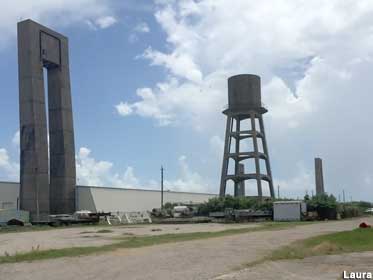
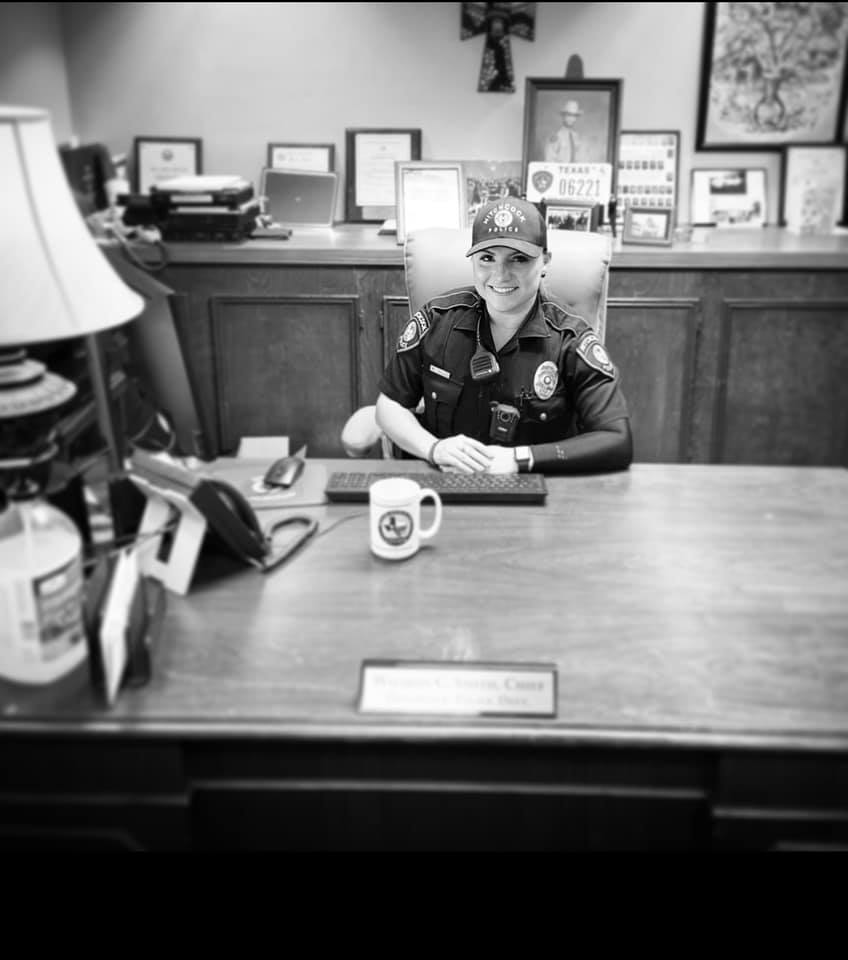
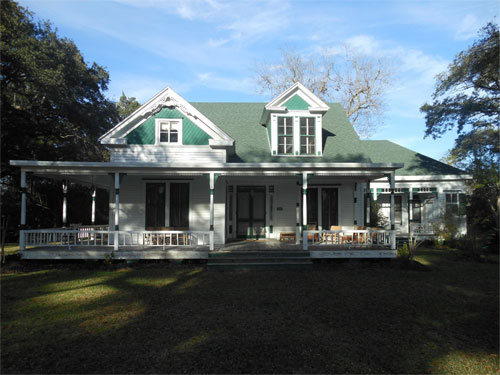


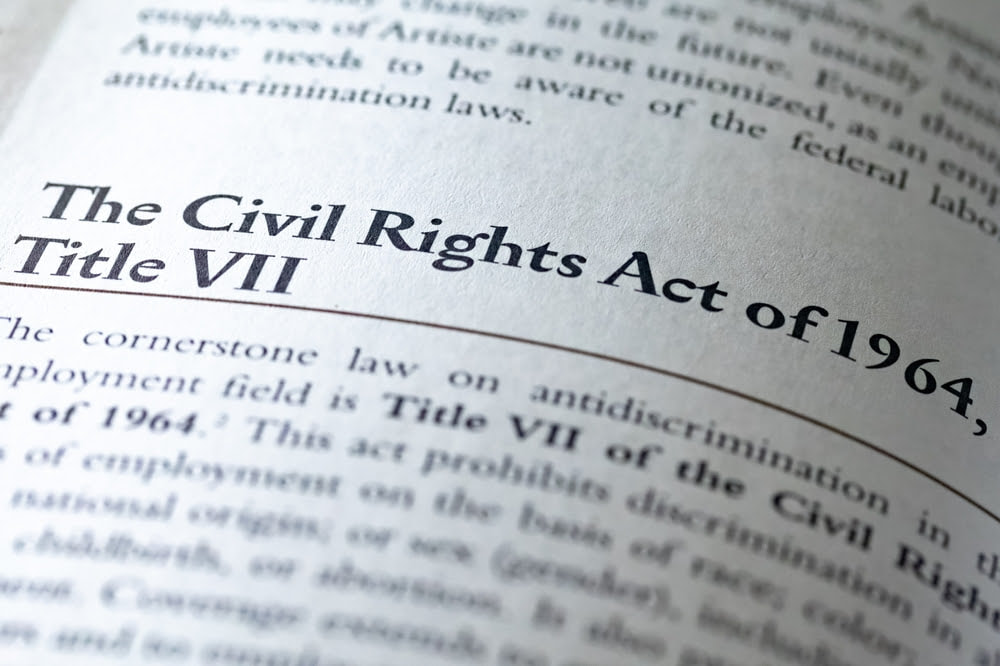

 RSS Feed
RSS Feed